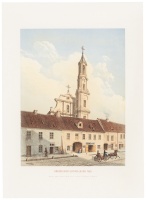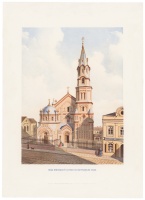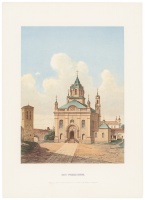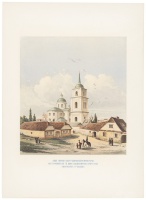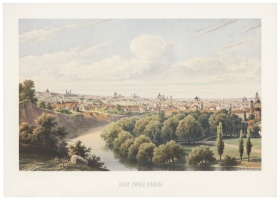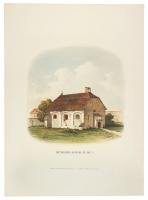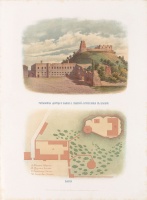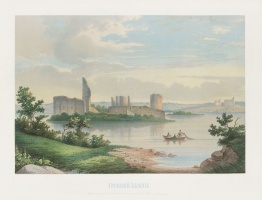
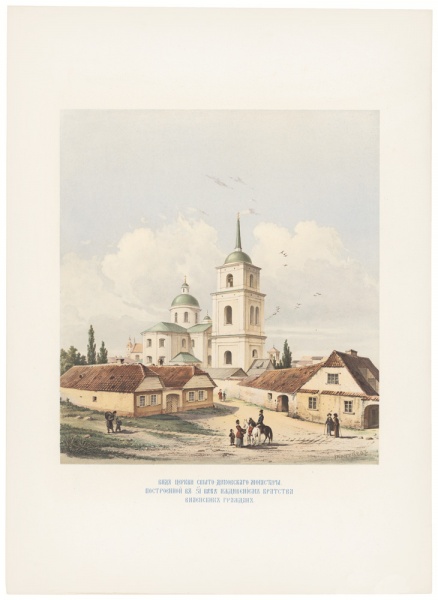

The Church of the Holy Spirit
| Authors: |
Ivan Trutnev (1827–1912) Pompei Batyushkov (1811–1892) |
| Created: | 1874 |
| Material: | paper |
| Technique: | chromolithograph |
| Dimensions: | 55 × 40.50 cm |
| Signature: | inscription: Вид церкви Свято-духовного монастыря, построенной в 16 веке иждивением братства Виленских граждан / ТРУТНЕВ |
Pompey Batyushkov, ‘Old Russian Monuments in the Western Provinces’, 1874.
The wooden Church of the Holy Spirit appeared at the end of the 16th century. In 1633, permission to rebuild it in stone was granted by Władysław Waza, the King of Poland and Grand Duke of Lithuania, and the church became an Orthodox Lithuanian Metropolitan shrine with a monastery. It burned down in the middle of the 18th century, and was reconstructed in the Baroque style by the famous Vilnius architect Johann Christoph Glaubitz. After the 1863 uprising against Imperial Russian rule, Governor-General Muravyov set out to liquidate all traces of the Catholic spirit from the architecture of Orthodox churches, and therefore in 1873, the volutes and frontons were removed from the Baroque façade, and a central drum and dome were added. The Late Baroque bell tower was rebuilt in the Late Classical style. But those who enter the Church of the Holy Spirit today marvel at its surviving Baroque interior and iconostasis, which are uncharacteristic of Orthodox architecture.
Source: Law firm Valiunas Ellex art album VILNIUS. TOPOPHILIA II (2015). Compiler and author Laima LaučkaitėExpositions: “Vilnius. Topophilia. Views of Vilnius from the collection of the law firm Ellex Valiunas”, 5 October – 26 November 2017, National Gallery of Art, Vilnius (curator Laima Laučkaitė)







